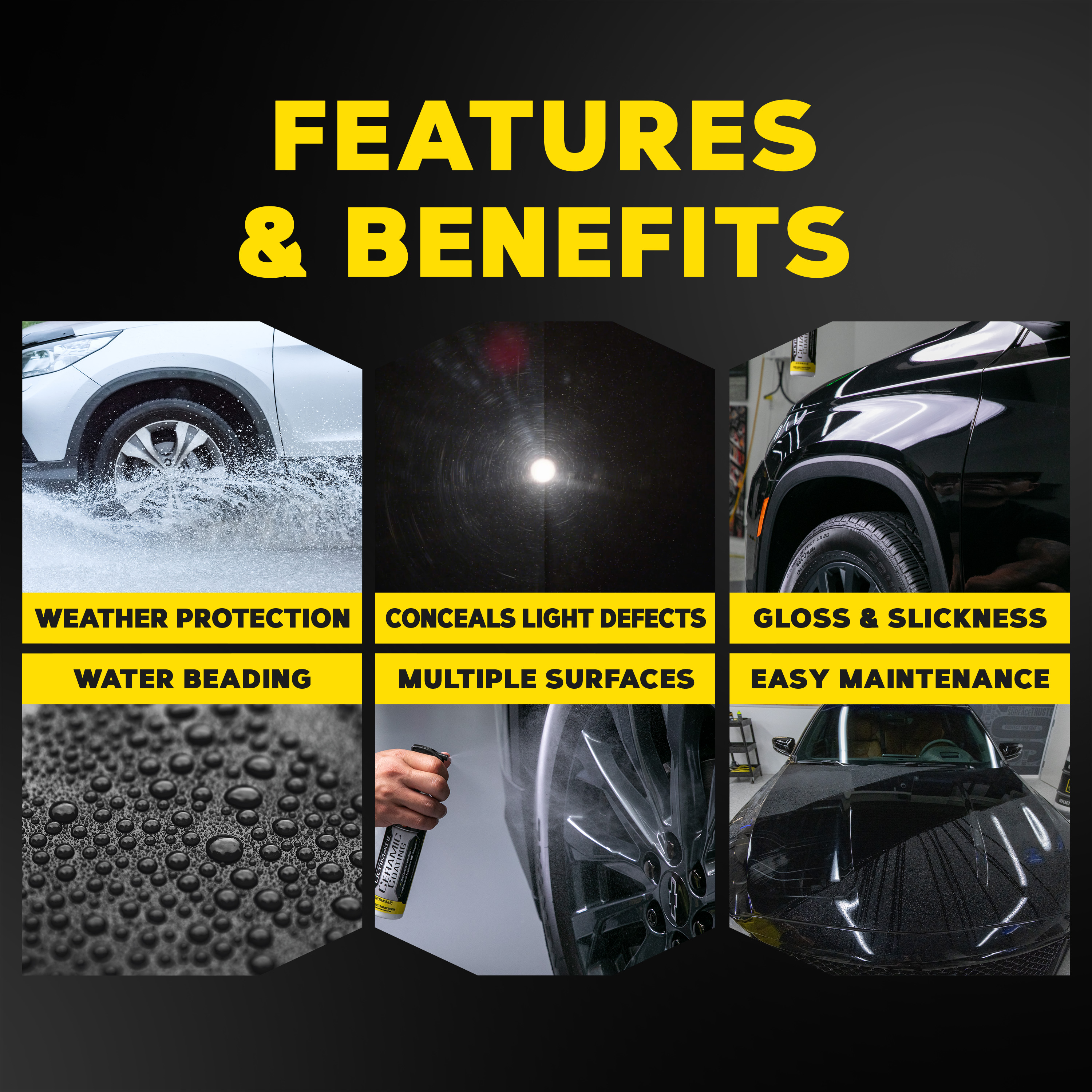Why Ceramic Finishing Is the Ultimate Remedy for a Flawless Finish
Ceramic finishing has emerged as a leading service for those looking for a flawless coating for their cars, many thanks to its impressive durability and safety functions. What aspects genuinely set ceramic coating apart?
What Is Ceramic Finishing?

When used correctly, ceramic coating develops a hydrophobic surface area that repels water and dirt, making it less complicated to clean up and preserve. Unlike conventional waxes or sealants, which usually supply brief protection, ceramic coatings can last for numerous years, depending upon the product high quality and application approach. The process of using ceramic coating calls for careful preparation, including complete cleaning and sometimes paint modification, to guarantee optimal bonding and performance.
Ceramic finishings are not restricted to vehicle surface areas; they can also be used on various materials, including glass, steel, and plastics, supplying a functional solution for improving defense. Overall, ceramic finishing represents a considerable development in surface security technology, integrating both useful and aesthetic advantages for a variety of applications.
Benefits of Ceramic Layer
While numerous surface area defense choices exist, the advantages of ceramic layer stand apart as a result of its special properties and resilient efficiency. Among the key advantages is its exceptional toughness. Ceramic Coating Philadelphia. Unlike standard wax or sealers that call for frequent reapplication, ceramic finishings offer a resistant layer that can last for numerous years, significantly reducing upkeep efforts
One more significant benefit is boosted security against environmental impurities. Ceramic finishes produce a hydrophobic surface that fends off water, dust, and various pollutants, making it easier to clean. This attribute not just maintains the lorry's look but also reduces the danger of deterioration and oxidation, particularly in harsh weather.
Moreover, ceramic finishes supply superior resistance to UV rays, protecting against fading and destruction of paint in time. This UV defense is vital for keeping the visual value of surfaces and automobiles exposed to route sunlight.
Furthermore, the shiny finish achieved with ceramic finishing enhances the overall aesthetic allure, offering surface areas a showroom-quality luster. On the whole, ceramic finishes represent a significant advancement in surface defense innovation, providing long-lasting benefits that cater to both visual and practical demands.
Exactly How It Functions
Comprehending the science behind ceramic finishings exposes exactly how they provide such remarkable security and longevity. At its core, a ceramic layer is a fluid polymer that chemically bonds with the car's factory paint.
The application process includes several actions, including surface area prep work, which is vital to achieving optimum bond. As soon as applied, the coating undergoes a treating process, throughout which it hardens and forms a semi-permanent bond with the paint surface area. This bond is what differentiates ceramic layers from conventional waxes and sealants, supplying a longer-lasting safety barrier that can sustain for several years.
In addition, the thickness of the layer can enhance its safety qualities, making sure that it can stand up to severe conditions. Ultimately, the scientific research of ceramic coatings integrates sophisticated materials with ingenious application methods to deliver an unmatched degree of defense and aesthetic enhancement for automobiles.
Comparison With Standard Methods
When contrasted to typical paint protection approaches such as sealers and waxes,The advantages of ceramic coverings come to be specifically noticeable. While waxes supply a temporary shine, typically lasting a few weeks to a number of months, ceramic finishes provide a resilient safety layer that can endure for a number of years. check out here This sturdiness dramatically decreases the regularity of reapplication, making ceramic finishes a much more cost-efficient solution with time.
Furthermore, traditional methods often need substantial prep work and numerous applications to accomplish a sufficient degree of protection. In contrast, ceramic coverings bond at a molecular degree with the lorry's surface area, developing a durable guard versus environmental contaminants like UV rays, acid rain, and roadway salts. This bond improves the car's resistance to scratches and swirl marks, which prevail with standard waxes and sealers.
Moreover, the hydrophobic residential or commercial properties of ceramic coverings repel water and dirt, resulting in simpler cleaning and maintenance. On the other hand, wax and sealant-treated surface areas can attract gunk, necessitating even more constant cleaning - Ceramic Coating Philadelphia. Generally, ceramic finishes not only supply superior protection however also supply a more aesthetically enticing and long-lasting coating, developing them as the favored option for critical automobile proprietors
Application and Maintenance Tips

Utilizing a foam applicator, use the layer in small areas, complying with the supplier's guidelines pertaining to density and overlap. Permit adequate healing time between layers, generally 24 hours, to ensure proper bonding. After application, it is essential to avoid direct exposure to water or extreme aspects for at the very least a week to enable the layer to fully treat.
For maintenance, wash the car consistently with pH-balanced soaps and avoid unpleasant products. Touchless vehicle laundries are suggested to minimize scratching. Additionally, using a ceramic upkeep spray can improve the finish's hydrophobic residential or commercial properties and long life. Routine assessments for any signs of wear will certainly assist preserve the finishing's integrity and protect that immaculate finish.
Verdict
To conclude, ceramic layer emerges as an exceptional option for achieving a remarkable vehicle finish. Its exceptional resilience, protective high qualities, and hydrophobic homes dramatically improve the vehicle's look while streamlining upkeep initiatives. By forming a robust bond with factory paint, ceramic layer successfully shields against scratches, UV rays, and environmental pollutants. With a life expectancy extending a number of years, this advanced solution not only protects however also raises the general aesthetic appeal of vehicles, making it an economical investment for auto lovers.
